Article: Types of Rubber Plants & Rubber Plant Care
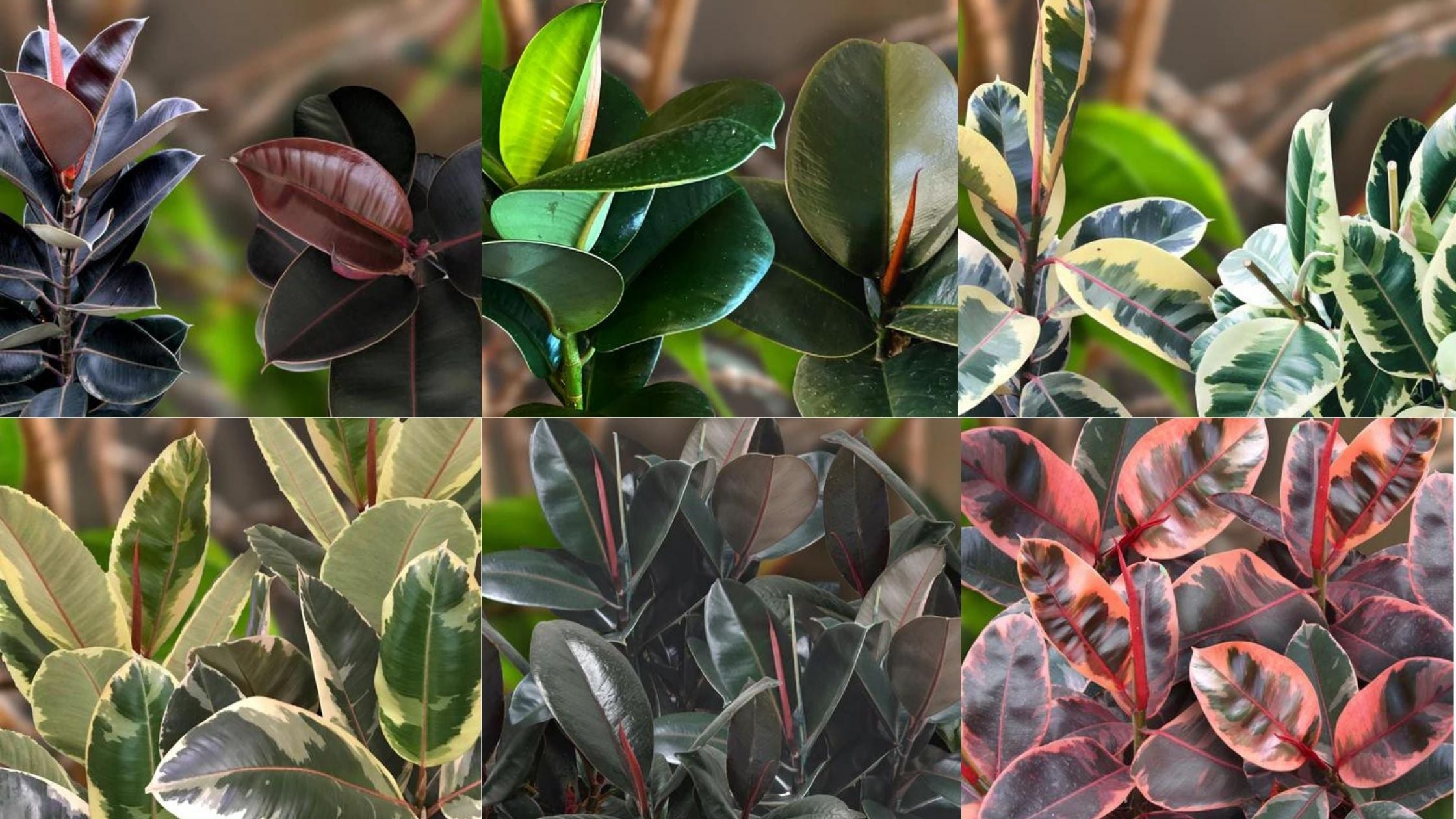
Types of Rubber Plants & Rubber Plant Care
Plant lovers adore collecting the various types of rubber plants with their array of different colors. And no wonder - the huge, glossy, leathery leaves of the Rubber Plant (Fiscus elastica) make it an attractive and unique addition to the home. Rubber plants are tolerant of many growing conditions, and their care is simple. The opposite of finicky and acclimate well to new environments, the rubber plant is an excellent choice for new plant parents!
This plant is also known as a rubber tree, rubber bush, or rubber fig. It gets its name from the white “rubber” sap that oozes from the leaves and stems if cut. The sap has a milky and latex-like consistency. It may irritate the skin, so be mindful when tending this plant.
Origins of rubber plants
The rubber plant originates from southern Asia, specifically China, Nepal, Malaysia, and India. In the wild, it grows up to 100-feet tall. Forty years ago, it was an extremely popular houseplant. It grew out of popularity for a while, but now it is making a comeback with many intriguing and attractive cultivars.
Types of rubber plants
There is a lot of confusion in garden centers, online, and among plant experts on the naming of various cultivars. The ficus you obtain may have a different name than those listed, but still be one of them. Or, more likely, it is just being sold as a rubber plant with no designation of type. It's complicated because garden centers often mislabel them. Don't stress about it, though. The care is the same for them all, and they are all beautiful.

Ficus elastica Robusta – A hardier, more robust cultivar of the original type popular 30 years ago. This is the one most commonly available today. It has broader leaves, tolerates lower humidity, and is more compact than the original.

Ficus elastica Decora – Only slightly different from Robusta, this cultivar has wider and larger dark-green leaves. The center vein of the leaves is red underneath and slightly white on top. The casing around the new leaves is also deep red.
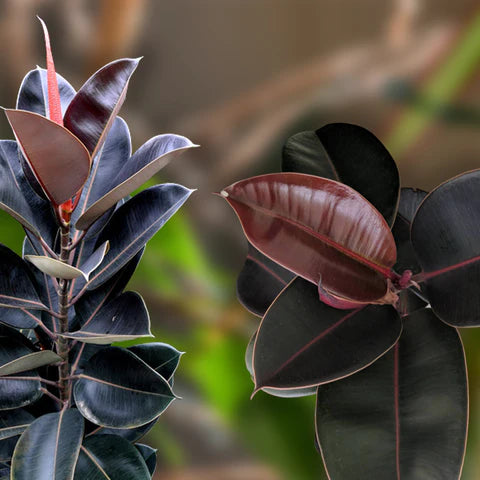
Ficus elastica Burgundy or Abidjan or Black Prince – The leaves on this variety are so dark that they look purplish-black. The midrib is red and stands out contrasted against the dark leaves.
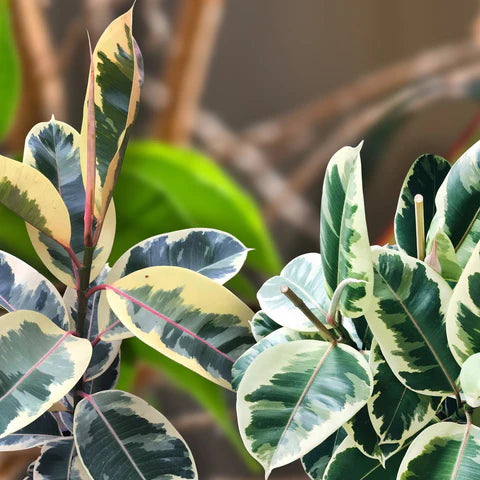
Ficus elastica Doescheri – This rubber plant has narrower leaves and a dramatic variegated pattern. The leaves are green, yellow, white, and grayish-green and have a pink midrib.
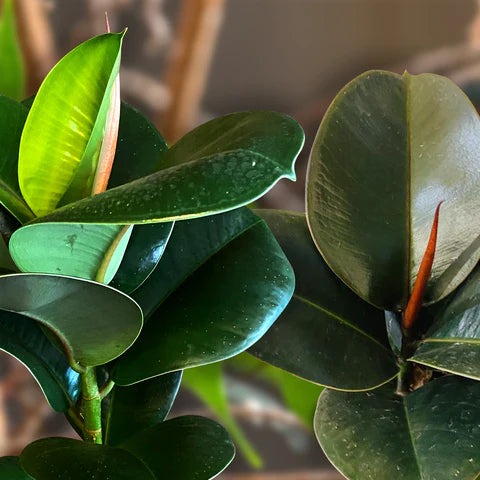
Ficus elastica Sophia – A rubber plant with all green leaves, which are rounder and smaller than the classic Robusta.

Ficus elastica Ruby – The cultivar features dark, wine red leaves, which are accentuated in full sun.
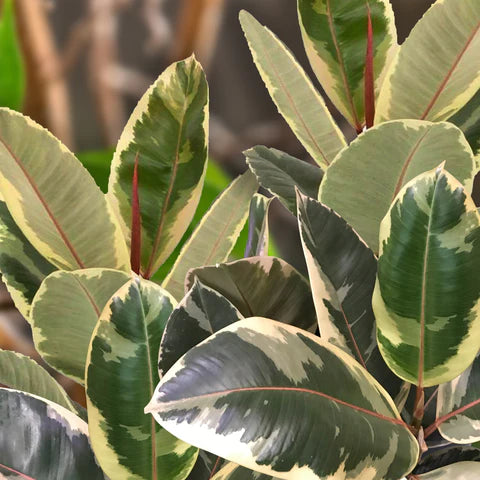
Ficus elastica Tineke – A newer cultivar, this rubber plant showcases variegated green and white leaves with burgundy overtones.
Rubber plant care
Best light conditions for rubber trees
Avoid placing in direct sunlight. Rubber plants prefer lots of indirect sunlight. The red varieties specifically benefit from lots of indirect light. Variegated varieties must have abundant indirect light, or the many-colored patterns won't appear. Green cultivars withstand a bit more shade and poorly lit locations. If left in the shade too long, though, they will become spindly.
A south-facing window with sheer curtains that light can shine through is ideal. The glossy leaves attract dust and need to be wiped down regularly. Dirty leaves inhibit the plant's ability to absorb sunlight, and the overall growth will suffer.
How much water do rubber plants need?
Only add water when the top inch of soil is completely dry. Rubber plants suffer greatly from overwatering. If the roots are frequently damp, they can rot. Give the soil a thorough soaking, then wait for it to dry out again. This will likely take 2-3 weeks. Once you learn the habits of your rubber plant, set a schedule for checking the dryness of the soil.
Do not let water sit longer than 30 minutes in the drip tray, or it will cause soggy roots. If your rubber plant displays yellow, dropping leaves, it is being overwatered.
In the winter, when the plant is resting, water it once a month. You don't need to do the full soaking, just give it enough water to keep the soil moist.
How should I fertilize my rubber tree?
In the spring and summer, add a diluted balanced fertilizer once a month. This helps the rubber plant produce it's large, glorious leaves. Do not add fertilizer in the winter months.
What's the ideal temperature for rubber plants?
While not super picky about temperature, the rubber tree will struggle a little bit when outside its preference. The ideal range is between 50F and 85F, which is quite a vast range for a houseplant. Anything hotter than 85F will stunt the large, showy leaves. They will still grow but will not be anything close to their potential size. If the temperature is below 39F, the plant will likely not survive.
Rubber plants are hardy in USDA zones 9-12. Rubber trees benefit from summering outside and many people in southern states keep rubber tree outside all year long.
What's the best potting soil for rubber trees?
Use a well-draining, balanced potting soil mix. A mixture of potting soil, peat, coarse sand, and pine bark is ideal.
For repotting rubber plants, we recommend Southside Plants Trail Mix, a chunky potting mix perfect for tropical plants with ropey roots.
How should I repot my rubber plant?
If you want your rubber plant to grow larger, you'll need to repot it every 1-2 years. Only go one pot size up at a time, or the roots will struggle to adapt. Once it reaches the desired size, keep it in the same pot, but be sure to replace the soil every year to replenish the nutrients.
Are rubber plants pet-friendly?
The rubber plant is toxic to cats and dogs because the milky sap it emits causes gastrointestinal issues. This plant is not deadly but should be kept away from house pets as much as possible.
Learn more
Looking for tips on a creating a Zen Garden? Read this post.

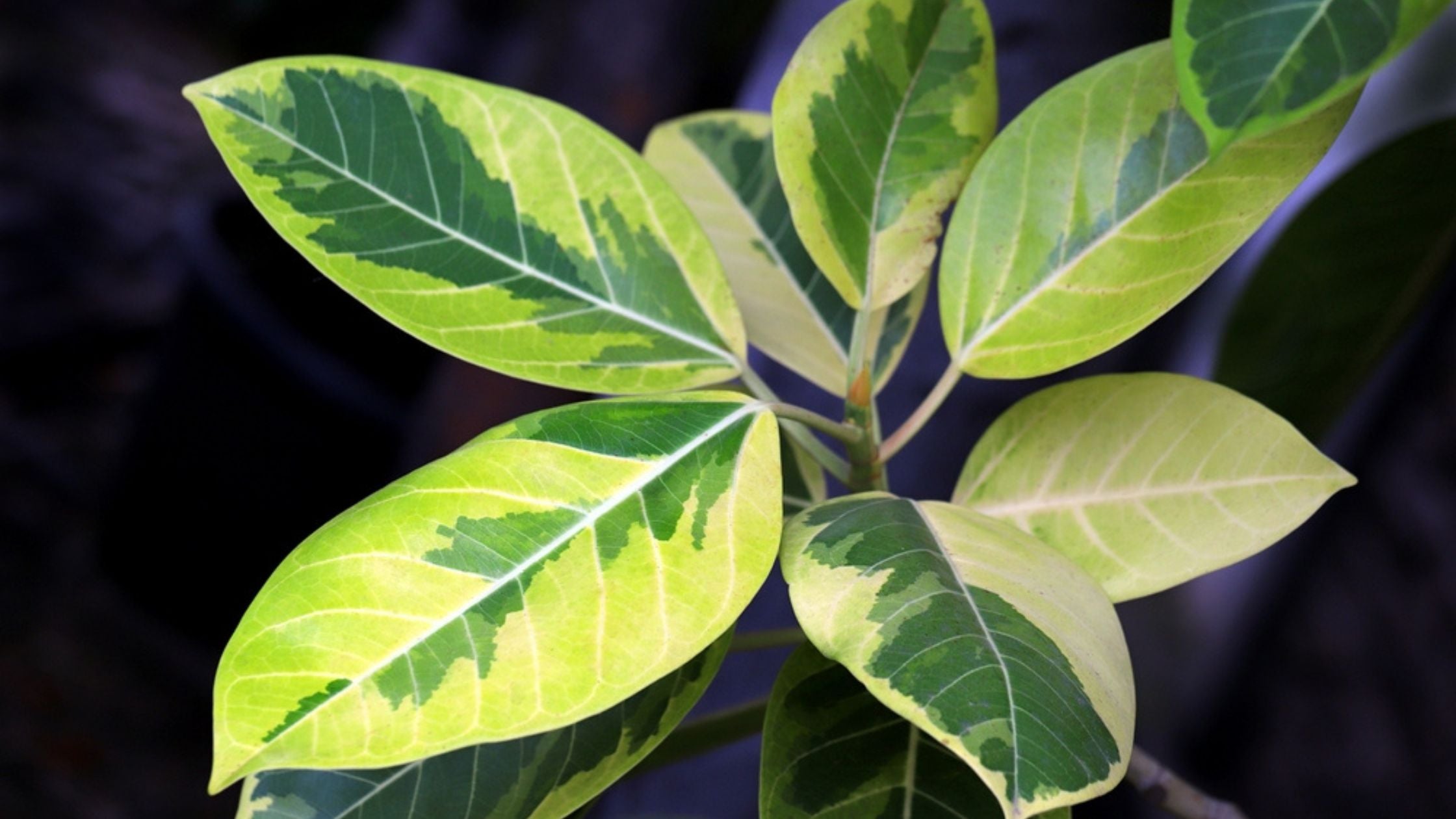
Leave a comment
This site is protected by hCaptcha and the hCaptcha Privacy Policy and Terms of Service apply.